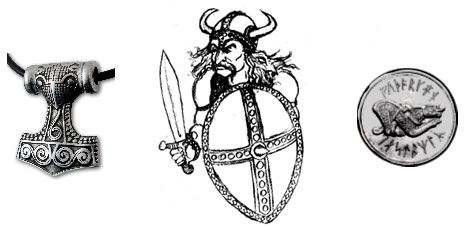The Viking Range at a Glance
VIKING – Metalldetektoren
The Viking Range at a Glance
Glossary
All Metal Detection Mode: The All Metal detection mode is similar to the Non Motion mode in that a constant faint sound is heard. However, if the search head is held over a target the sound will slowly retune to the preset threshold level. This means the detector never has to be retuned.
Battery Check: Found on our metal detectors with an LCD. Indicates the condition of the battery and when it should be changed.
Concentric Search Coils: Our larger ‚Polo‘ shaped search head contains different sized, completely round coils, centred around the same axis. This produces a highly sensitive detection area beneath the centre of the search head.
“DD”Search Coils: The search coils within our smaller search head are shaped like the letter ‚D‘. Two of these coils are placed back to back slightly overlapping creating a sensitive detection area.
Discrimination Control: This setting is used to make the metal detector reject lower quality targets. When set at 0 the metal detector will give a signal for all metal objects. When set at maximum only the most conductive objects will be indicated by the detector.
Headphone Socket: All Viking metal detectors contain a headphone socket as standard to allow headphones to be connected to the detector. We recommend the use of headphones to cut out external noise and allow even the faintest signals to be heard.
High Visibility Casing: The bright yellow casing allows our industrial metal detectors to be easily found if laid in long grass or amongst other tools.
Membrane Keypad: Rather than the conventional rotary controls, the Membrane Keypad allows all the metal detector settings to be adjusted through a simple menu on the LCD.
Motion Metal Detectors: Motion metal detectors require no tuning and are silent until an object is found. When the search head is moving past a target the metal detector emits a sharp ‘beep‘ to indicate its presence. The ‘beep‘ occurs when the centre of the search head is directly over the target, to aid location.
Non Motion Metal Detectors: Non Motion machines are the most basic type of metal detector. When used, a faint sound is heard through the headphones or loudspeaker. When the search head is moved close to a metal object the sound rises in volume to indicate the presence of a target. This type of metal detector must be ‘tuned‘ to obtain the maximum sensitivity to objects.
Pinpoint Button: Found on metal detectors with multiple detection modes, the pinpoint button switches the metal detector into a basic Non Motion mode to help accurately locate the target object.
Sturdy Three Piece Stem: This allows the metal detector to be easily broken down into 3 parts for transportation. The solid connection mechanism also eliminates wobble as the metal detector is swept across the ground.
Target ID: The Target ID gives a reading for each target, represented by a number on the LCD between 0 and 95. A low reading corresponds with a poor quality target, possibly iron, whereas a high reading indicates a very conductive target, maybe silver or copper.
Telescopic Shaft: The lower part of the metal detector’s stem slides into the upper part and can be fastened in a number of positions, making the length of the detector adjustable. This allows comfortable use of the metal detector for detectorists of different heights.
Tuning Controls: Tuning controls are found on our non-motion metal detectors. They are used to adjust the faint threshold sound heard through the speaker or headphones when no object is close by. Ideally this should be set as low as possible, whilst still being audible, so the smallest variations caused by targets can be heard.
Die VIKING Metalldetektoren sind sehr gute Einsteigergeräte. Auch als Zweitgerät, oder für die weibliche Begleitung und den „Kleinen Schatzsucher“ !!!
Herstellerangaben. Irrtum und technische Änderungen vorbehalten.


